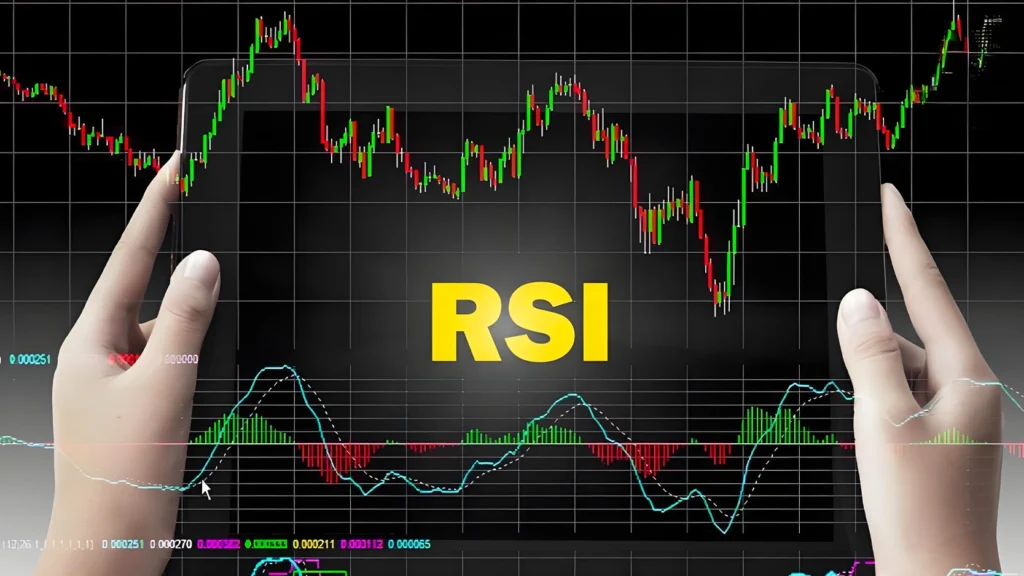What is the S&P 500 Index? How to Grasp the Pulse of the US Stock Market?
In the landscape of global financial markets, the Standard & Poor’s 500 Index (S&P 500) is undoubtedly one of the most important and closely watched financial benchmarks. It is not only regarded as a barometer of the health of the US stock market but is also widely used as a key proxy for measuring the overall strength of the US economy. For any trader seeking to excel in the financial markets, gaining an in-depth understanding of the S&P 500’s composition, operating mechanisms, and the key forces influencing its movements is an essential part of building a solid knowledge base.
What Is the S&P 500 Index and Why Is It Considered a Microcosm of the US Economy?
To understand the S&P 500 Index, one must first grasp its core definition and market position. This index is more than just the fluctuation of a number, it embodies a broad spectrum of information about the US economy.
The Standard & Poor’s 500 Index, is a stock market index maintained by S&P Dow Jones Indices. Its modern version was officially launched on March 4, 1957, with the aim of tracking the performance of approximately 500 large companies listed on major US exchanges. These companies are carefully selected from leading markets such as the New York Stock Exchange (NYSE) and Nasdaq, with their combined market capitalization covering about 80% of the total US stock market, making the index the most representative benchmark for measuring the performance of US large-cap stocks.
Precisely because of its broad coverage and diversified industry distribution, the S&P 500 is hailed as the “bellwether” of the US economy. Compared with the Dow Jones Industrial Average, which includes only 30 companies, the S&P 500’s much broader component base allows it to more comprehensively reflect overall market trends and structural changes in the economy.
Looking back at its historical trajectory, the S&P 500 Index has shown a long-term upward trend, with its growth curve faithfully recording the development of the US economy. From its predecessor, an index of 233 companies launched in 1923 by the Standard Statistics Company, to its expansion to 500 companies in 1957, it has witnessed multiple transformations of the US economy. Despite experiencing numerous major shocks throughout history, the index has consistently demonstrated remarkable resilience, rebounding after each downturn. This resilient nature has kept its historical average annual return at around 10%, though this does not mean returns are stable every year.
On a deeper level, the evolution of the S&P 500 Index is not just a stock price chart, but a chronicle of structural shifts in the US economy. In the mid-20th century, the index was dominated by industrial and manufacturing giants, reflecting the economic landscape of that era. However, as times changed, especially with the rise of the technological revolution in the late 20th century, the index’s weight gradually shifted toward technology and information services companies. Today, giants in sectors like information technology and communication services, such as Apple, Microsoft, and NVIDIA, hold dominant positions in the index, clearly illustrating the US economy’s transformation from a traditional industrial base to a digital, service-oriented modern economy. Therefore, analyzing the historical performance and sector weight changes of the S&P 500 enables traders to see not only market trends but also the fundamental evolution of America’s industrial strength.
How Are the Components of the S&P 500 Index Selected?
One of the key reasons the S&P 500 Index is so highly regarded lies in its rigorous and comprehensive component selection mechanism. Unlike many indices that rely solely on fixed mathematical rules, the components of the S&P 500 are selected and maintained by an index committee at S&P Dow Jones Indices. This approach allows for a degree of qualitative judgment on top of quantitative criteria, ensuring the index continues to accurately represent the overall landscape of the US economy. The committee conducts a quarterly review and rebalancing of the index (typically in March, June, September, and December each year) to reflect the latest market developments.
To be included in the S&P 500, a company must meet a series of strict requirements, covering various dimensions such as market capitalization, liquidity, and financial health.
Market Capitalization and Liquidity Requirements
First and foremost, a company must be of sufficient size. To be eligible for inclusion in the index, a candidate company must meet a minimum market capitalization threshold. This threshold may be adjusted based on prevailing market conditions; for example, at certain times, a company’s unadjusted total market capitalization is required to reach at least $14.5 billion. Equally important is the company’s “public float market capitalization”, which refers to the market value of shares available for public trading, and this must also meet a required proportion.
Second, high liquidity is an essential requirement. This ensures that the prices of component stocks accurately reflect market supply and demand, and that related financial derivatives such as ETFs and CFDs can operate smoothly. Specific liquidity standards include:
- Trading volume requirement: During each of the six months prior to evaluation, the stock must have a monthly trading volume of at least 250,000 shares.
- Trading value ratio: The ratio of annual trading value to public float market capitalization must exceed 0.75, demonstrating that the stock is actively traded in the market.
Financial Stability and Other Eligibility Criteria
Beyond size and liquidity, financial health is a core factor assessed by the committee. This is also one of the key distinctions between the S&P 500 and some other indices.
- Profitability requirement: Candidate companies must demonstrate consistent profitability. Specifically, the most recent quarterly earnings report must show positive net income, and the sum of net income over the past four consecutive quarters must also be positive. This rule effectively excludes large but chronically unprofitable or financially unstable companies.
- Company background and listing requirement: The company must be a US entity and publicly listed on a qualified US exchange such as the New York Stock Exchange (NYSE), Nasdaq, or the Chicago Board Options Exchange (CBOE). Additionally, companies are generally required to have been publicly traded for at least one year following their initial public offering (IPO) before being eligible for consideration.
- Public float ratio: To ensure sufficient public participation, a company’s public float must represent at least 10% of its total outstanding shares.
These strict selection criteria effectively serve as a built-in “quality filter” for the S&P 500 Index. When traders invest in the S&P 500, they are not simply buying into the 500 largest companies by size, but into a carefully curated portfolio of companies that possess multiple high-quality attributes, including large scale, high liquidity, financial stability, and mature operations. The profitability requirement filters out highly speculative companies or those with unproven business models, while the liquidity requirement ensures price integrity and smooth trading. As a result, when traders choose the S&P 500, they are essentially benefiting from the index committee’s rigorous due diligence process, which imparts an inherent level of stability and quality assurance to the index itself.
How Is the Value of the S&P 500 Index Calculated?
The calculation method of the S&P 500 Index is one of its core features and directly determines which companies’ stock price movements have the greatest impact on the overall index performance. The index uses a float-adjusted market capitalization weighting method.
This calculation process can be broken down into several steps: First, calculate the float-adjusted market capitalization of each component stock. This is not simply the stock price multiplied by total shares outstanding, but rather the stock price multiplied by the number of shares available for public trading (i.e., float-adjusted shares), excluding shares held by insiders such as founders and executives, governments, or other companies.
Next, sum the float-adjusted market capitalizations of all component stocks to obtain the total float-adjusted market capitalization of the index.
Finally, this total market capitalization is divided by a proprietary figure known as the “Index Divisor” to arrive at the specific point value of the S&P 500 Index. The divisor is a critical adjustment factor; when corporate actions such as stock splits, component changes, or special dividend payouts occur, the index committee adjusts the divisor to ensure that these events do not distort the index’s continuity, thereby maintaining comparability across different time periods.
This market capitalization weighting method is fundamentally different from the price-weighted method used by the Dow Jones Industrial Average. In a price-weighted index, stocks with higher prices have a greater impact on the index, regardless of the company’s overall size. In contrast, within the S&P 500, companies with larger market capitalizations carry greater weight, meaning their stock price movements have a more significant influence on the index.
The advantage of market capitalization weighting lies in its ability to accurately reflect the market’s collective assessment of a company’s value, with the influence of large enterprises aligning with their economic significance. However, a core drawback is the risk of concentration, performance of a few high-market-cap stocks may distort the true state of the overall market, as price fluctuations in giant companies can have an outsized impact on the index.
More critically, this mechanism inherently contains a momentum-following bias. When a stock’s price rises, its market capitalization and index weight increase simultaneously, forcing passive funds that track the index to increase their holdings, creating a self-reinforcing cycle. This feature can accelerate bubble formation in bull markets, especially when stock prices diverge from fundamentals, as passive buying exacerbates the risk of overvaluation. Conversely, when a bubble bursts, declines in high-weight stocks will also have an amplified effect. Understanding this dynamic is crucial for assessing the vulnerability of market tops.
Which Sectors Dominate the S&P 500?
To fully understand the S&P 500, one must examine its internal structure. According to the Global Industry Classification Standard (GICS), the S&P 500 Index is divided into 11 official sectors. This classification provides traders with a clear framework for analyzing the market’s composition and understanding how different economic forces impact specific areas.
In the current market structure, the Information Technology sector holds an overwhelming lead. When combined with the Communication Services sector, which also has strong ties to technology, the total weight of tech-related industries in the index is substantial, highlighting the central role of technological innovation as a driving force in the modern US economy.
The following table outlines the 11 sectors of the S&P 500 along with their latest weights, key characteristics, and representative companies, offering traders a clear and intuitive overview of the market landscape.
| Sector | Weight | Key Characteristics | Representative Companies |
| Information Technology | 32.5% | Cyclical; sensitive to economic cycles and interest rate changes; high growth potential. | Microsoft, Apple, NVIDIA, Broadcom |
| Financials | 13.9% | Cyclical; closely linked to interest rate trends and overall economic health. | Berkshire Hathaway, JPMorgan Chase, Visa |
| Consumer Discretionary | 10.4% | Highly cyclical; dependent on consumer confidence and disposable income. | Amazon, Tesla, Home Depot |
| Communication Services | 9.7% | Mixed; includes cyclical segments like advertising and entertainment, and defensive telecom services. | Meta Platforms, Alphabet (Google), Netflix |
| Health Care | 9.5% | Defensive; demand is relatively unaffected by economic cycles, but sensitive to policy changes. | Eli Lilly, Johnson & Johnson, UnitedHealth Group |
| Industrials | 8.6% | Cyclical; closely tied to manufacturing, construction, and transportation activity. | General Electric, Boeing, Honeywell |
| Consumer Staples | 5.6% | Defensive; demand for products like food and household goods remains stable across economic conditions. | Procter & Gamble, Coca-Cola, Costco |
| Energy | 3.2% | Cyclical; performance largely driven by global commodity prices (oil, natural gas). | Exxon Mobil, Chevron, ConocoPhillips |
| Utilities | 2.4% | Defensive; provide essential services with stable demand, often pay steady dividends. | NextEra Energy, Duke Energy |
| Real Estate | 2.1% | Interest rate sensitive; performance tied to rates and economic growth, includes REITs. | American Tower, Prologis, Simon Property Group |
| Materials | 1.9% | Highly cyclical; reliant on construction and manufacturing demand for raw materials. | Linde, Sherwin-Williams, DuPont |
Note: Weight data is based on sources and represents approximate values that are subject to change with market fluctuations.
How to Trade the S&P 500?
For traders, directly purchasing all 500-plus stocks in the S&P 500 Index is impractical. Fortunately, financial markets offer a variety of efficient derivative instruments and funds that allow traders to conveniently gain exposure to the S&P 500 Index.
Exchange-Traded Funds (ETFs)
Exchange-Traded Funds (ETFs) are among the most widely recognized instruments. Funds such as SPDR S&P 500 ETF (SPY), iShares Core S&P 500 ETF (IVV), and Vanguard S&P 500 ETF (VOO) aim to hold all the constituent stocks of the S&P 500 and closely replicate the index’s performance. ETFs are traded on exchanges like regular stocks, allowing investors to buy and sell throughout the trading day. They are favored by both long-term investors and short-term traders due to their high liquidity, relatively low expense ratios, and convenience.
Futures Contracts
S&P 500 futures contracts, such as the highly liquid E-mini S&P 500 futures (symbol: ES), are standardized legal agreements to buy or sell the S&P 500 Index at a predetermined price on a specified future date. Futures are primarily used by institutional investors and professional traders for hedging and speculation. They are characterized by high leverage and nearly 24-hour trading sessions (five days a week), offering traders greater flexibility. However, futures trading requires a higher margin, making the entry threshold relatively high.
Contracts for Difference (CFDs)
Contracts for Difference (CFDs) are flexible derivative instruments that allow traders to speculate on the price movements of the S&P 500 Index without actually owning any underlying assets. Traders enter into a contract with a broker and settle the difference in index price between the opening and closing of a position. CFDs offer several attractive features for retail traders:
- Leverage: Traders only need to deposit a small portion of capital (known as margin) to control a larger position. This amplifies potential profits, but also increases potential losses.
- Two-way trading: Unlike traditional stock trading which only profits from rising prices, CFDs allow traders to go long (expecting prices to rise) or short (expecting prices to fall), offering opportunities in any market condition.
- Low entry threshold: Compared to futures, CFDs have more flexible contract sizes and lower initial capital requirements, making them a popular choice for retail traders looking to access the S&P 500 market.
For active traders, trading costs are a key factor that impacts overall profitability. Trading S&P 500 CFDs through brokers partnered with Cashback Island offers an additional advantage: traders can earn cash rebates based on their trading volume. These rebates effectively reduce the cost of spreads or commissions, and over time, especially for frequent traders this can significantly enhance net returns.
Which Macroeconomic Factors Influence the Movement of the S&P 500?
The price fluctuations of the S&P 500 Index do not occur in isolation; they are heavily influenced by the macroeconomic environment in the US and globally. For traders, closely monitoring key economic indicators is essential for anticipating potential market directions.
Federal Reserve Monetary Policy and Interest Rates
The monetary policy of the US Federal Reserve (the Fed) is one of the most critical factors influencing the movement of the S&P 500. The Fed is tasked with a dual mandate: maintaining price stability and promoting maximum employment. Its primary policy tool—the adjustment of the federal funds rate has a profound impact on the stock market.
- Rate-Hike Environment: When the Federal Reserve raises interest rates to curb inflation, borrowing costs for businesses increase, which can compress profit margins and dampen future investment expansion. At the same time, higher rates make lower-risk assets such as government bonds more attractive to investors. Together, these factors typically exert downward pressure on stock prices.
- Rate-Cut Environment: Conversely, when the Fed lowers interest rates to stimulate the economy, borrowing costs for businesses and consumers decrease, encouraging spending and investment, which in turn boosts corporate earnings and stock performance.
However, the market’s response mechanism is far more complex. Financial markets are forward-looking, they trade on expectations, not just on what has already happened. Market participants constantly interpret Fed officials’ speeches, meeting minutes, and economic data to forecast future policy directions. Therefore, traders must understand that the key lies in analyzing how news events shift the market’s collective expectations about future policy.
Key Economic Data Releases
In addition to interest rate decisions, a range of regularly released economic data can trigger significant market volatility.
- Nonfarm Payrolls (NFP): Released on the first Friday of each month, this is a key indicator of the health of the US labor market. A strong NFP report can be a double-edged sword. It signals a healthy economy but may also raise concerns about inflation, thereby strengthening expectations of Fed tightening—which could be negative for the stock market. Conversely, a weak report may indicate an economic slowdown but could also prompt the market to anticipate more accommodative Fed policies.
- Gross Domestic Product (GDP): As the broadest measure of economic activity, GDP growth directly impacts the overall earnings outlook for companies. Strong GDP growth is typically a positive signal for the S&P 500.
- Consumer Price Index (CPI): This is a primary measure of inflation. A CPI reading that exceeds expectations is a major concern for the market, as it increases pressure on the Fed to raise interest rates, which can pose a threat to stock valuations.
Staying informed about these market-moving data releases is essential for traders. Many advanced trading platforms typically feature built-in, real-time economic calendars and news feeds. These tools provide critical intelligence that helps traders better navigate market volatility before and after key data announcements.
Related Reading: What Exactly Is the Nonfarm Payroll Report, and Why Is It So Important to Traders Worldwide?
Related Reading: What Is the Consumer Price Index (CPI), and Why Is It a Key Data Point Every Trader Should Watch?
Conclusion
The S&P 500 Index is far more than just a number. It is a complex and dynamic system that precisely reflects the US economy. Behind it lies a rigorous component selection process, a unique market capitalization-weighted calculation method, and constant influence from powerful macroeconomic forces. A deep understanding of its sector composition and driving factors is the foundation for making informed trading decisions.
By combining the foundational knowledge outlined in this article with practical application, traders can build a more systematic market analysis framework. When this knowledge is paired with the practical advantages offered by Cashback Island, such as rebate mechanisms that reduce trading costs and access to professional tools—individual traders can approach market challenges with greater confidence and plan their trading strategies with a more strategic perspective.
Cashback Island continuously updates its educational resources on forex trading. Traders can visit the “Cashback Island Teaching Guide” section to learn about liquidity management, volatility strategies, and rebate optimization techniques.
Frequently Asked Questions
Q1. How Does the S&P 500’s Composition Differ from That of Other Stock Indices?
The S&P 500 uses a market capitalization-weighted methodology, giving larger companies greater influence. This mechanism reflects actual capital flows in the market but may also lead to excessive concentration in tech giants.
Q2. What Is the Core Difference Between the S&P 500 and the Dow Jones Industrial Average?
The Dow includes only 30 blue-chip stocks and uses a price-weighted approach, whereas the S&P 500 has broader coverage and its market-cap weighting makes it a more suitable representation of the overall economy.
“Forex trading involves high risk and may result in capital loss. The content of this article is for informational purposes only and does not constitute investment advice. Please make decisions cautiously based on your personal financial situation. Cashback Island assumes no liability for any trading outcomes.”
Related articles
-
In the realm of modern financial market analysis, whether it’s the fast-changing forex market, the highly volatile cryptocurrency space, or traditional stock indices, technical analysis plays an indispensable role. Among the many technical indicators, the Relative Strength Index (RSI) is undoubtedly one of the most classic and widely used tools....2025 年 9 月 4 日
-
In today's environment of persistently low interest rates combined with inflationary pressures, simply depositing money in the bank is no longer sufficient to preserve the future value of your assets. An increasing number of investors are seeking more proactive ways to grow their wealth, shifting from traditional savers to active...2025 年 8 月 13 日
-
In financial market terminology, “bottom-fishing” is a highly enticing yet challenging concept. It refers to an investment strategy aimed at buying assets that have undergone significant price declines and are believed to be undervalued, with the expectation that their prices will eventually rebound sharply. This strategy embodies the ultimate expression...2025 年 8 月 13 日













